Caroline, just one more thing. Just remember, the eggs are for selling, not for throwing.
—Charles Ingalls, Season 1, Episode 9 – School Mom
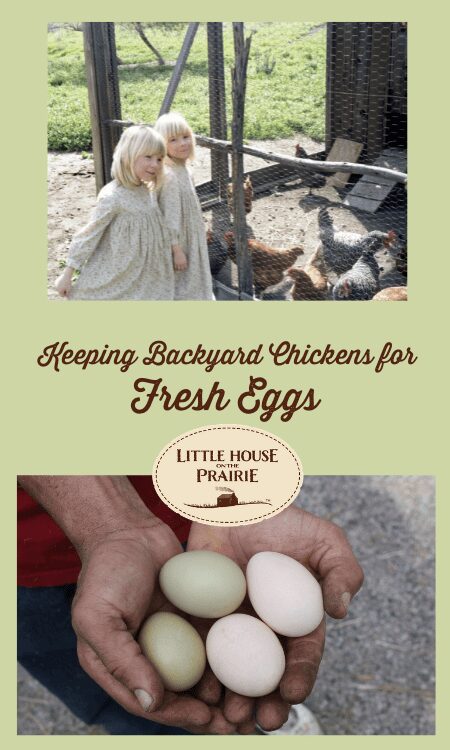
Who could forget how often Ma was able to add a bit of extra spending money by selling eggs from her chickens to the general store? The truth is, keeping backyard chickens for fresh eggs is a classic homesteading skill that has enjoyed a huge renaissance in recent years.
In fact, many cities have created laws or regulations to allow backyard chickens to be kept even within city limits. Check your local regulations for the number of birds and space requirements if you aren’t sure what the rules are in your area.
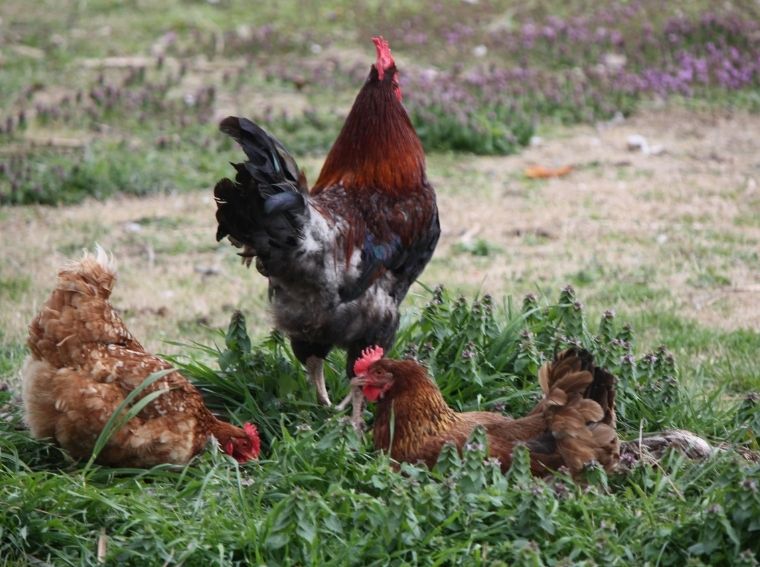
Laura Ingalls Wilder’s Chickens
Before Laura Ingalls Wilder found fame with her Little House books, she made a name for herself with short nonfiction pieces in magazines and newspapers, leaning heavily on her experience with farming (including hens and egg production). Wilder’s April 5, 1915 article in the Missouri Ruralist entitled “Economy in Egg Production” provides insights on the types of crops women should grow to produce chickens with vibrant plumage and hefty eggs. (You can read more about her articles in the book Laura Ingalls Wilder, Farm Journalist: Writings from the Ozarks.)
Benefits of Keeping Backyard Chickens
There are a lot of benefits to keeping your own chickens. Here are a few:
Nutrition – Studies show that pasture-raised chickens produce more nutritious eggs than conventionally-raised chickens lay. They have a third less cholesterol, twice as much Omega-3 fatty acids, more Vitamin A, and an increased level of folic acid.
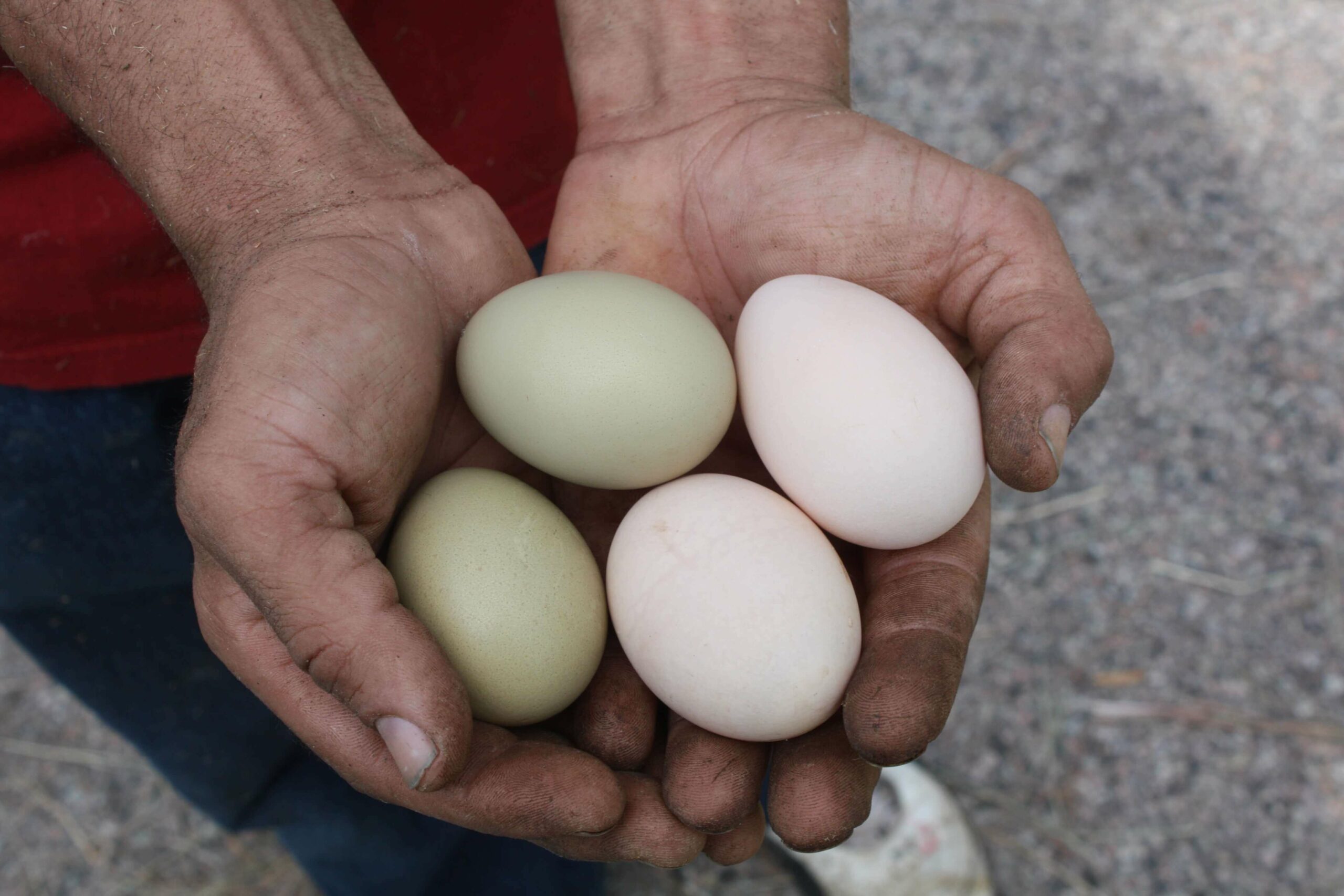
Hens can lay eggs in a variety of colors from white to brown to blue.
Flavor – The color and flavor difference between store-bought and home-raised eggs is amazing. Good feed and care make a huge difference, so it’s no wonder that most people never go back once they taste them.
Entertainment – I cannot tell you how entertaining it is to keep a flock of chickens. They scratch around the yard, fluff themselves in the dirt, chase June bugs in the grass, and generally provide a cheap source of entertainment that is so fun to watch.
Education – in addition to being an entertaining hobby, there are many age-appropriate tasks that children can take on to learn the ins and outs of raising chickens.
These are the four most important benefits for our family to keep chickens. For us, the small amount of care that our chickens need each day is worth every moment for the joy they bring and the eggs they provide.
Best Breeds for Backyard Chickens
Like dogs, there are different breeds of chickens, and each tends to have specific characteristics that make them better suited for different purposes. For example, some are hardier in cold weather. Some grow bigger and are usually raised for meat.
When it comes to chickens specifically bred for egg-laying production, consider whether you want brown egg layers, white egg layers, or a variety. And I like to avoid the commercial production breeds and focus on hardier, heritage breeds that don’t require much maintenance.
Here are some of my favorite breeds to consider:
Ameraucana – This is one of my favorite breeds because they lay colorful blue eggs, have cute fluffy ear-muff style feathers on their cheeks, and tend to be very friendly. Their docile nature makes them a great option for a small backyard flock.
Orpington – I love these fluffy, large hens as they tend to be friendly and good-natured as well. They are available in various colors, and I favor the blue and buff (golden) varieties personally. They are heavier chickens and don’t fly as well, so they may require ramp entrances to the coop and nest boxes.
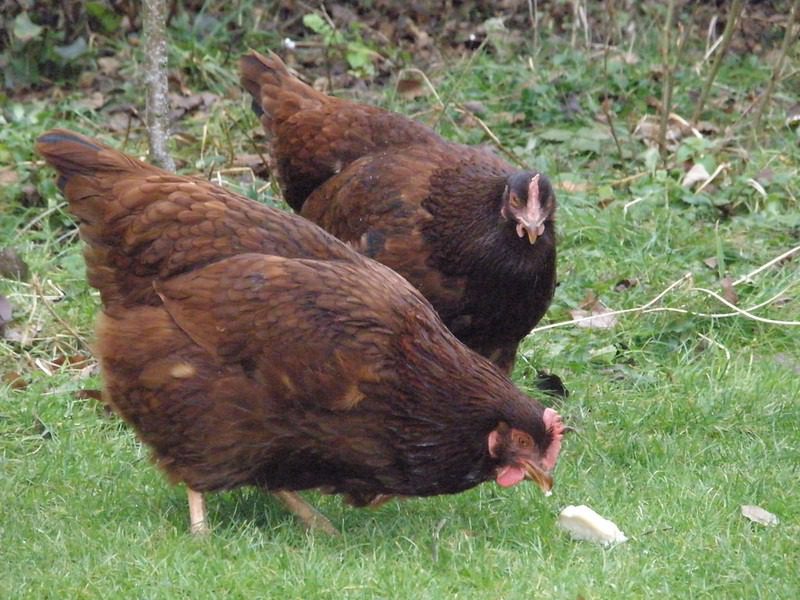
Rhode Island Reds are a beautiful dark red color and make a great backyard chicken option.
Rhode Island Red – The state bird of Rhode Island, this prolific layer is a beautiful bird. Expect 5-6 eggs a week and classic red hen coloring if you choose to raise these breeds. They are medium-sized birds and are popular because of their hardiness and good foraging skills.
Australorp – One of the best year-round layers, a Black Australorp holds the record for most eggs laid in a single year. Another medium-sized hen, I personally love the black-colored hens with the iridescent sheen they have to their feathers. If you choose to allow a hen to hatch out their own eggs, this breed tends to have great mothering skills.
This is just the beginning of the amazing chicken breeds available to a small backyard flock. I love to keep a variety of chickens and enjoy the different colors and personalities. However, I know some people find a favorite breed and stick to just one. Whatever works best for you, you can learn more about heritage chicken breeds at The Livestock Conservancy website.
Housing Chickens in Your Yard
Thankfully, raising chickens in the backyard looks nothing like commercial chicken houses. No super-stinky, mucky conditions if you keep everything in balance. Backyard chickens can be an easy-to-maintain part of the family and daily routine.
A chicken coop structure provides shelter from predators and inclement weather, especially at night. Most coops tend to be simple wooden structures, and the outside really doesn’t matter as long as certain elements are considered.
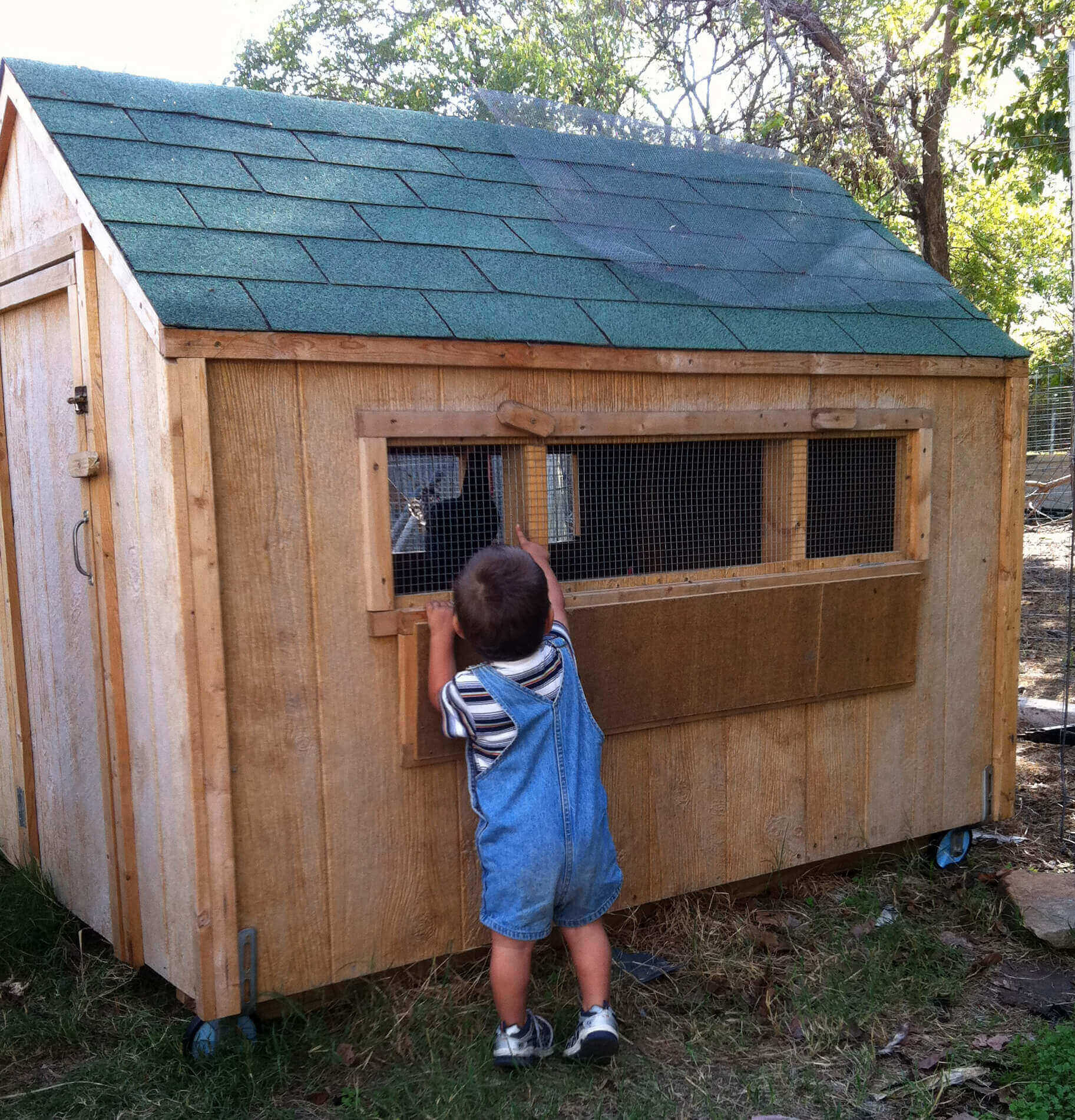
Predator Proofing – Make sure the coop can be secured, especially at night. Many different critters are capable of killing a chicken, so keeping your flock safe will be important.
Nest Boxes – You will want to provide a nest box area for your hens to lay their eggs in. You’ll find that different hens will tend towards a favorite box, but ideally, you should provide multiple nest boxes so your hens can choose a favorite. We tend to use milk crates on shelves as nesting areas.
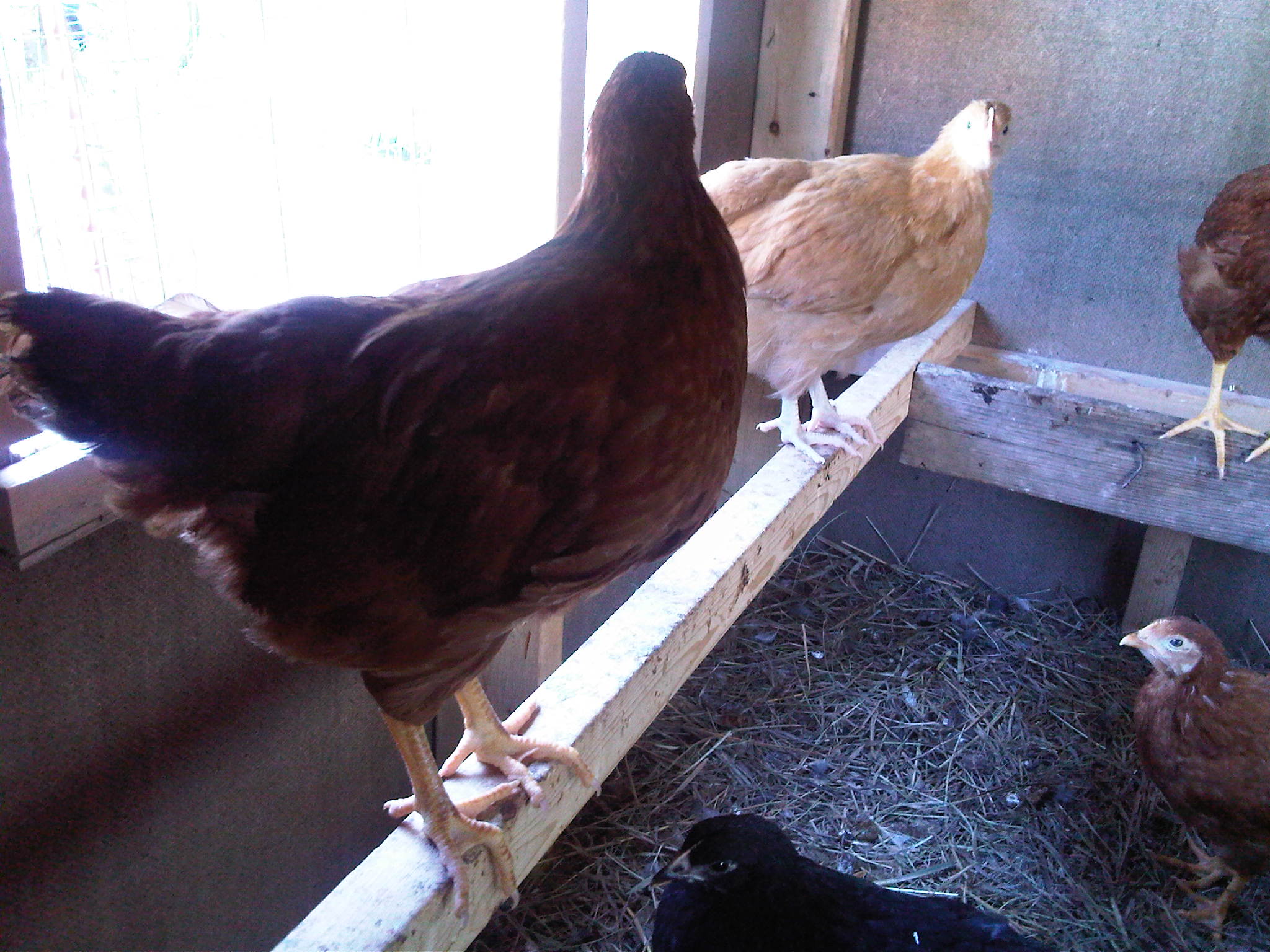
Roosts – Branches, wooden poles, or 2x4s turned sideways can all be used as perches for your chickens to roost on. We like providing various sizes for our roosts and have them fastened at different heights so each hen can find their own most comfortable perch at a height they prefer.
Other elements you’ll want to include in keeping your backyard flock of chickens include a dusting area for dust bathing and a secure yard for foraging during the day. This yard can be a chicken run area specifically for your chickens or your entire backyard, depending on your situation.
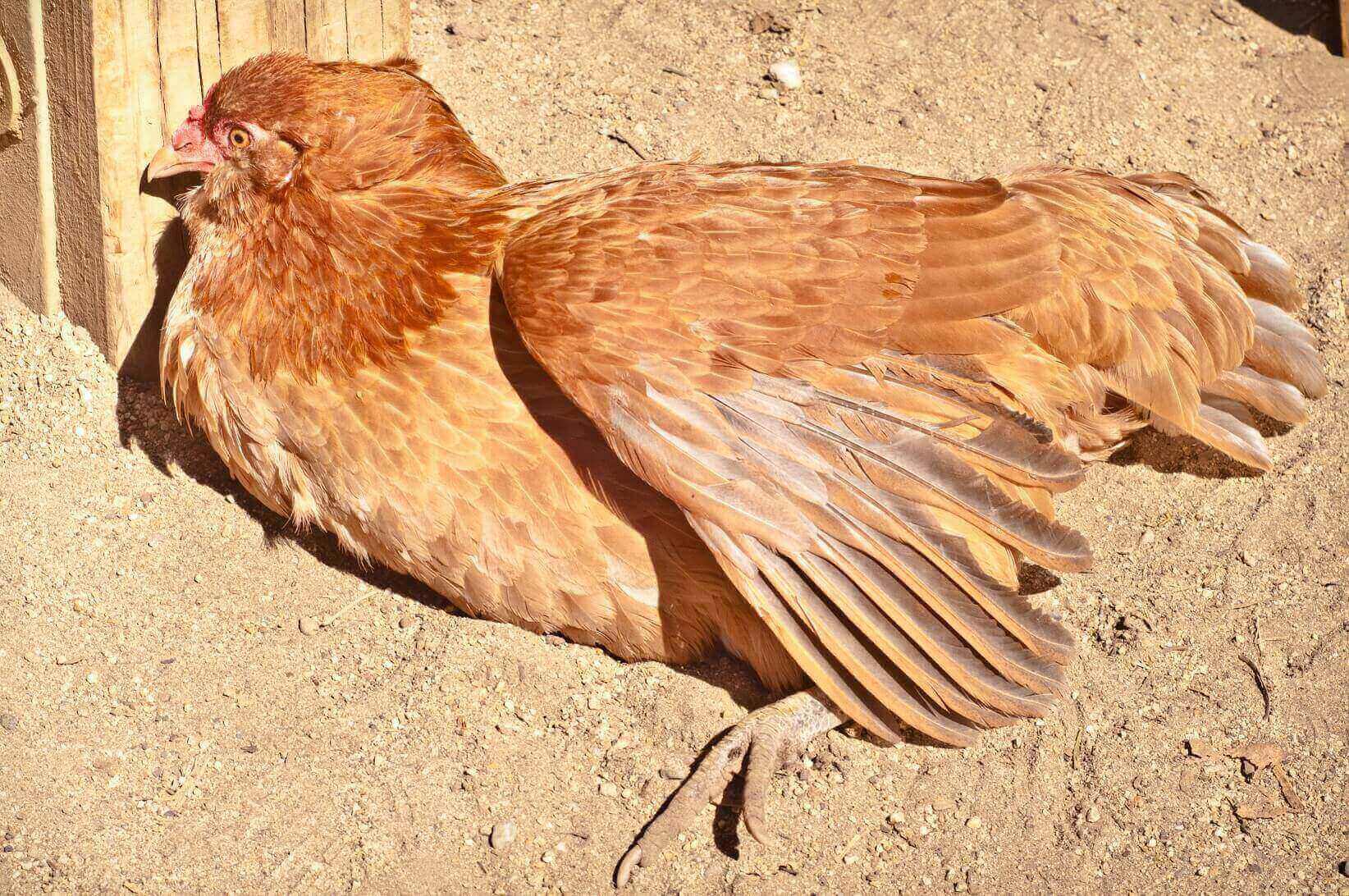
And of course, freshwater should be available at all times. So we use a self-waterer that provides a couple of days worth of water at a time and clean it thoroughly each time we refill it.
Feeding chickens can be very easy. They have access to growing grass and plants at all times, and we provide a ration of laying crumbles and grain each day. They don’t eat as much commercially-prepared food during the summer months when bugs and plants are readily available, but tend to rely more heavily on feed during the winter.
Chicks vs. Grown Hens
You have two options when starting your backyard flock – you can buy grown hens ready to lay eggs or buy baby chicks and raise them yourself. But, of course, there are pros and cons to each of these approaches.
Starting with adult hens that are already past the chick stage of life has a lot of benefits. First, they have a higher survival rate since they’ve already been through the sensitive chick phase of their life when some chicks are more likely to die. Second, they will also be ready to lay eggs as soon as they settle into their new home.
The major downside of buying hens instead of chicks is the price difference. Instead of $1-5 per chick (depending on the breed), you should expect to pay at least $20 per bird. That can add up quickly if you’re getting more than one or two hens.
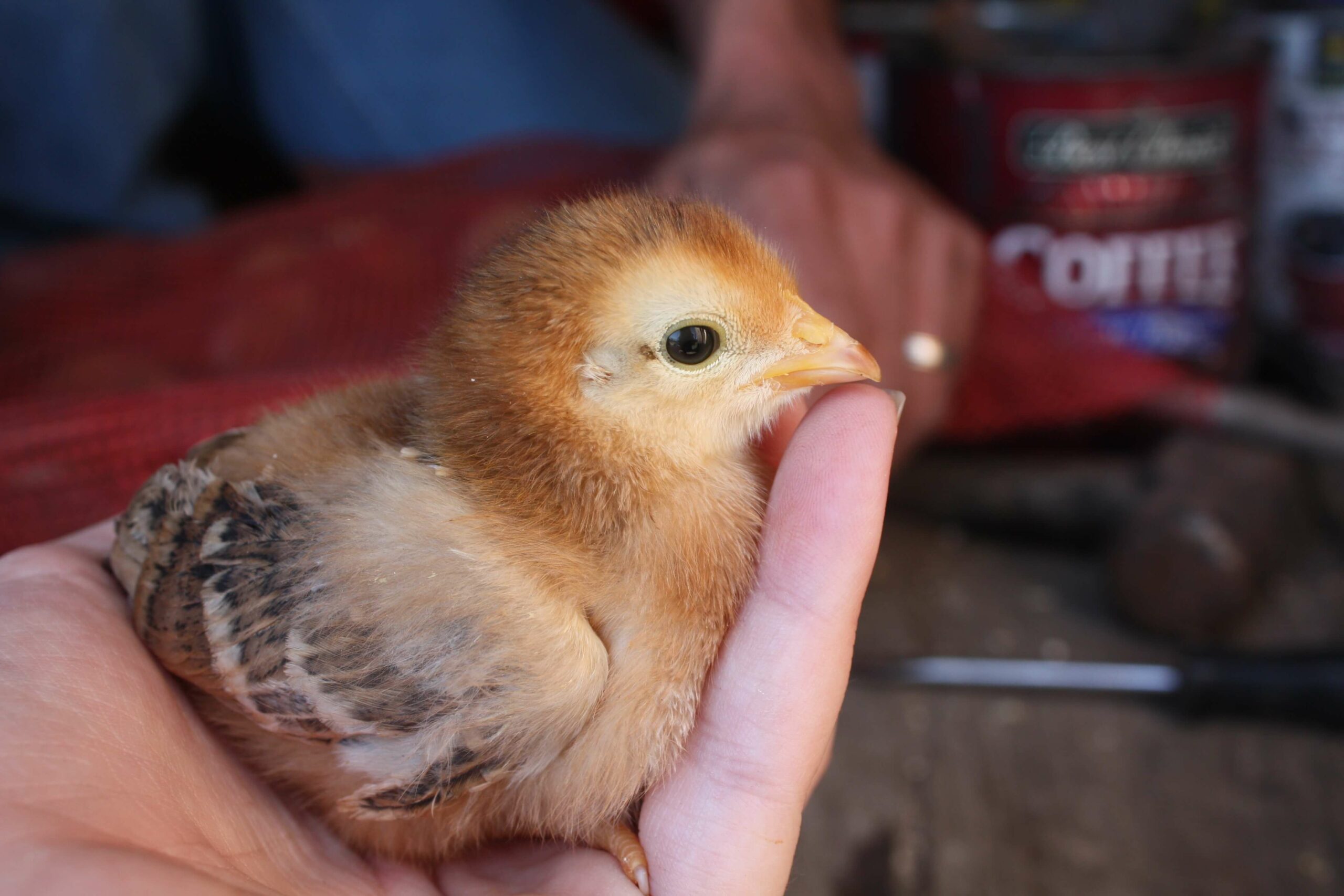
Starting with baby chicks is the most common way to begin a backyard flock. The biggest benefit of starting with babies is that they are much less expensive. And you get the enjoyment of raising them yourself – something I consider fun. You can also be sure about the kind of care they are getting early in life regarding feeding quality because you’re there from day one.
However, some people find it stressful to raise baby chicks, which may be a downside for you. Expect some losses during the first couple weeks of life when raising baby chicks. Chicks need specific care with round-the-clock heat for the first few weeks. The biggest downside is the amount of time it will take before you can begin to look forward to fresh eggs. It takes an average of six months from hatching to first eggs depending on the breed of the chicken.
Either way, your laying hens will provide hours of entertainment and delicious eggs. So let yourself be inspired by Ma Ingalls and enjoy the benefits of raising your own backyard flock.
Mother of five living in rural Oklahoma with her husband and children, Angela is the Founder of Untrained Housewife, co-founder of the Homestead Bloggers Network and Organic Gardening expert at About.com. She is the author of Backyard Farming on an Acre (More or Less), as well as several other books, all with the common theme of helping people embrace the journey towards self-sufficiency.


I would like to know how you keep your chicken coop warm during the cold months so the water will not freeze. Thank you!
I have had chickens for years. I use a heated water bucket year round for my girls. In the winter, I just plug it in and the built in heater keeps the water from freezing. For the chickens themselves, as long as they are fully feathered, they do not need heat in the winter